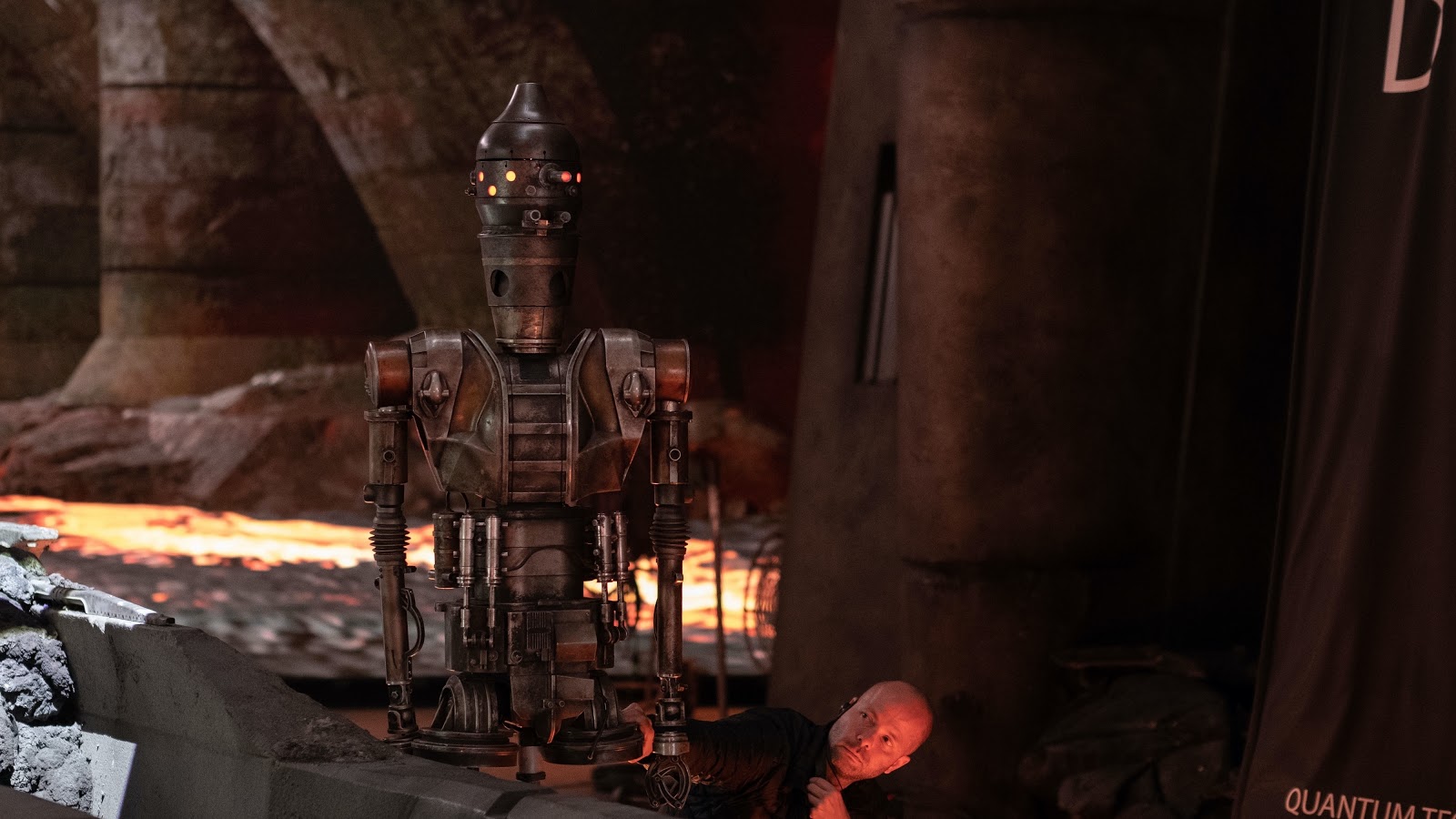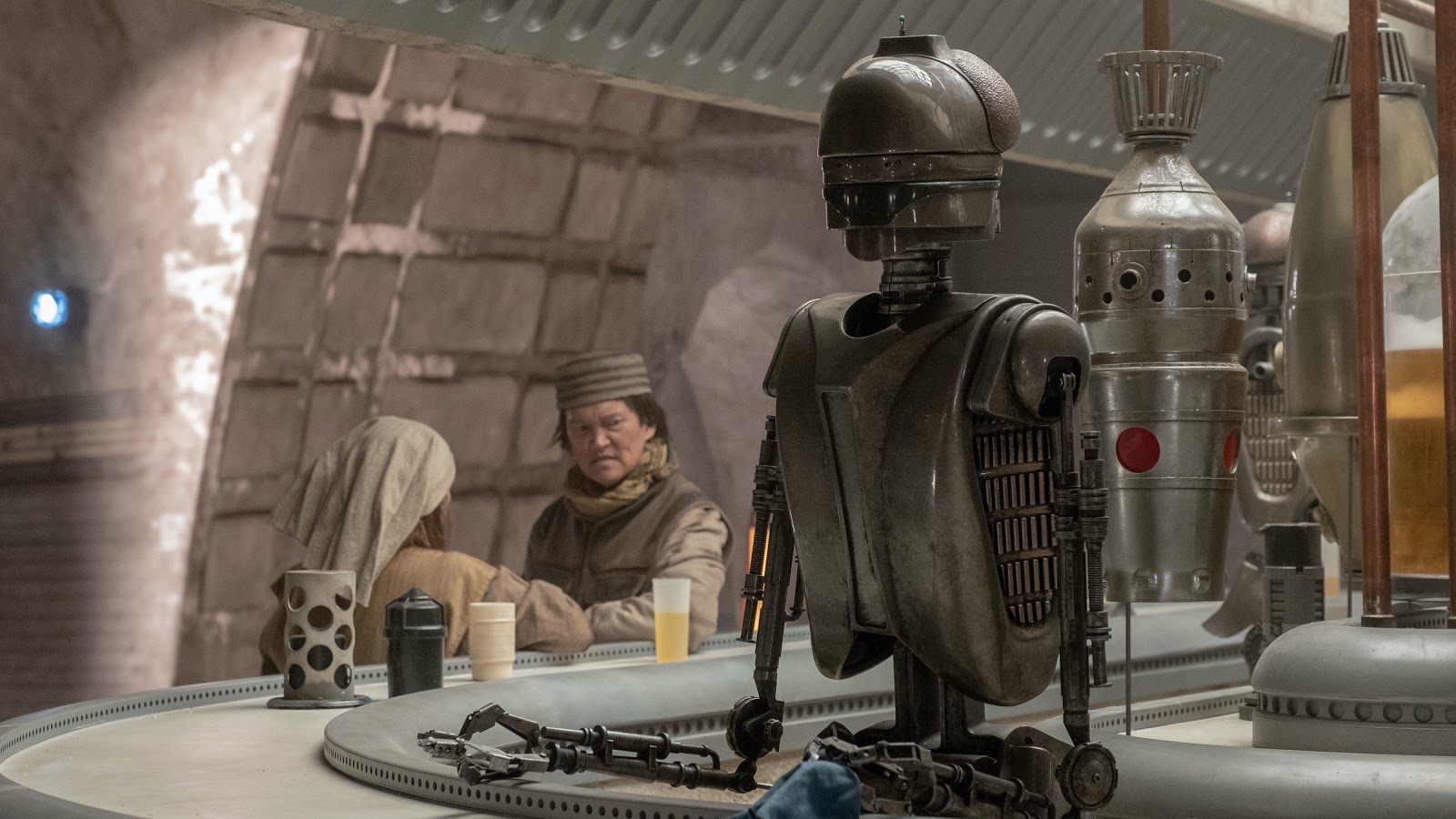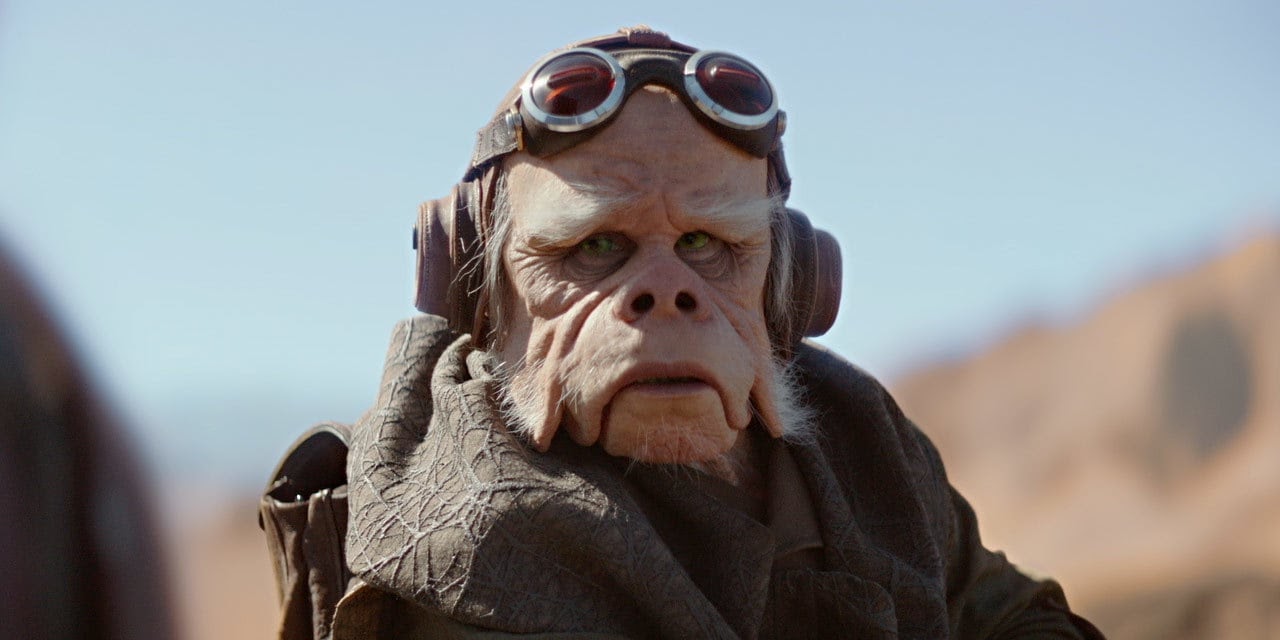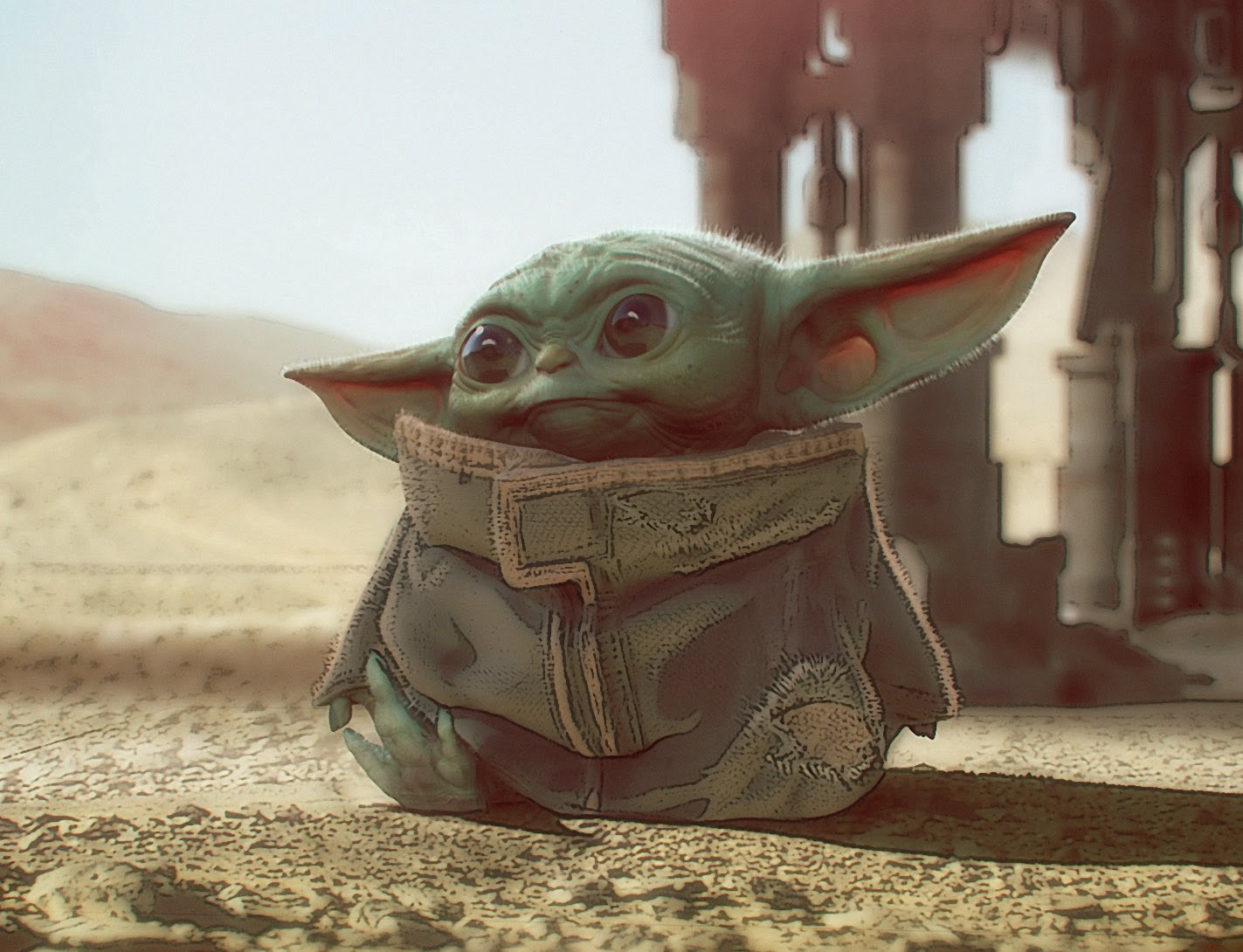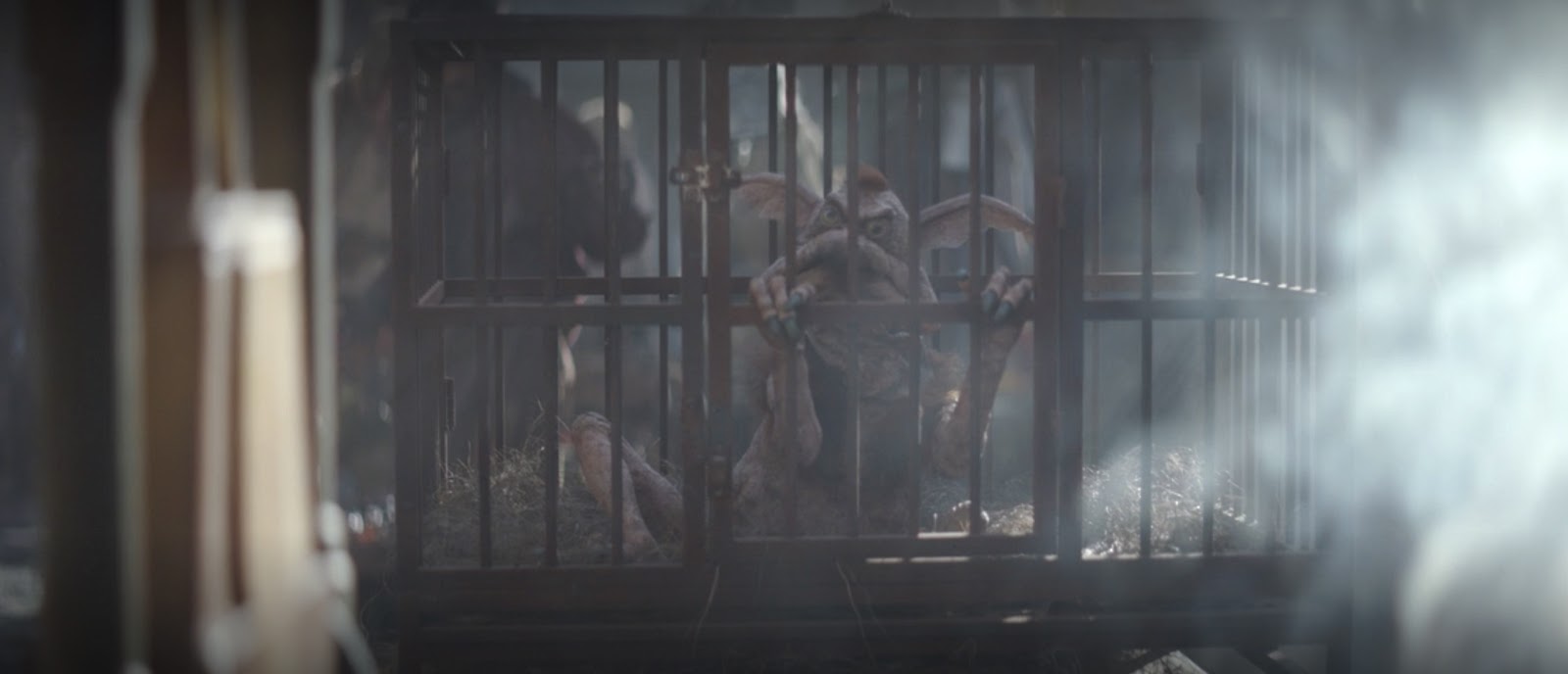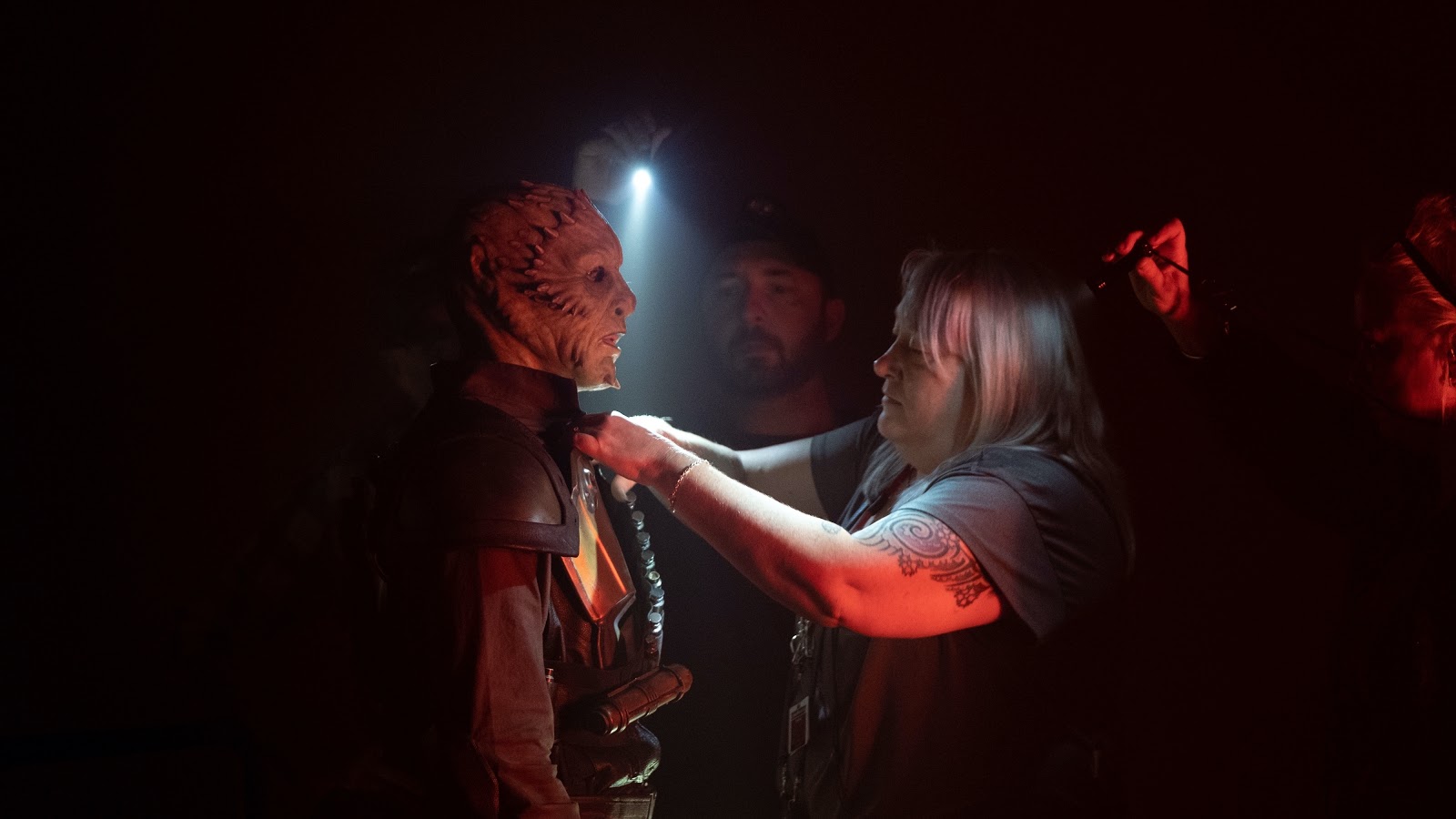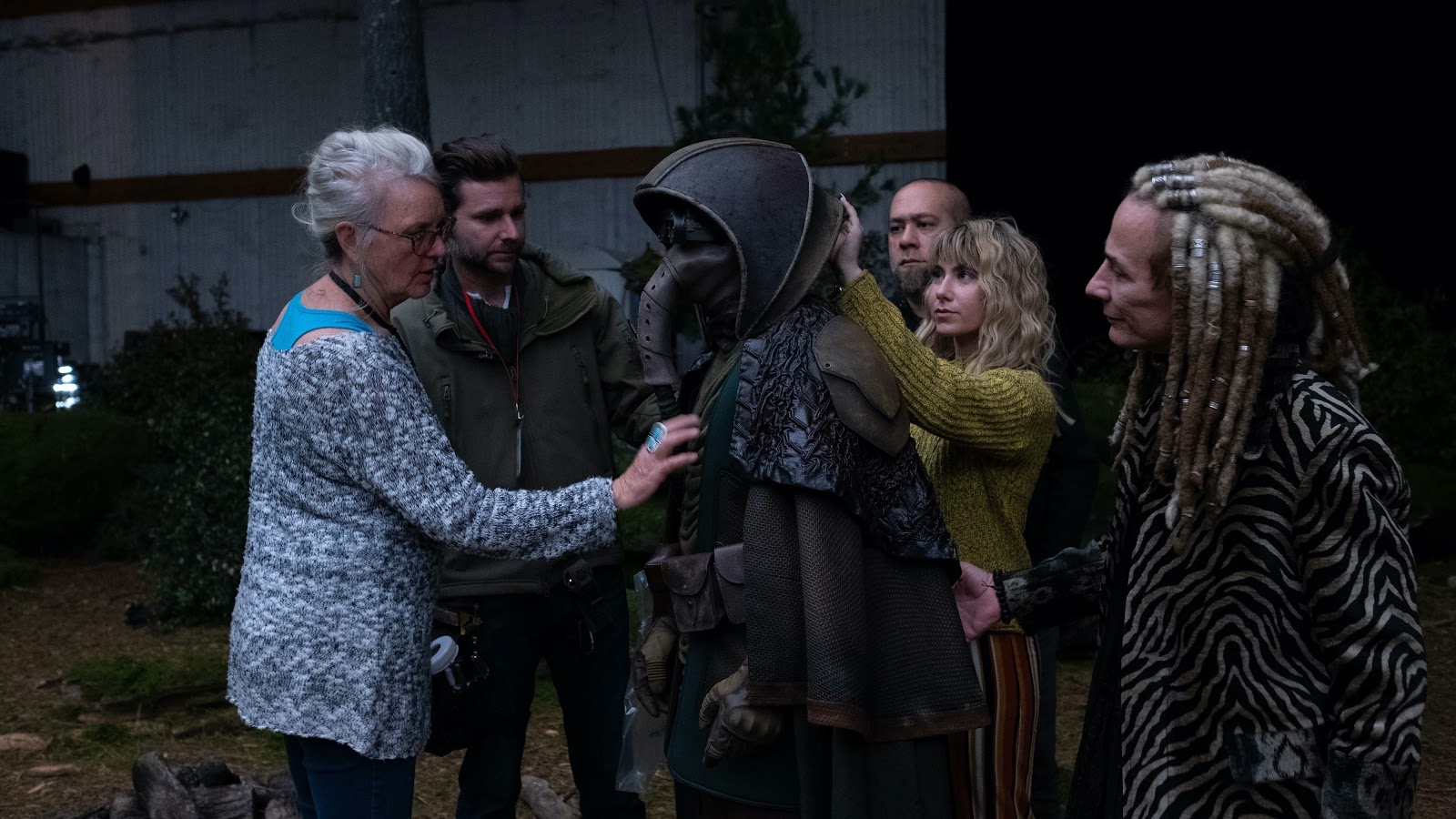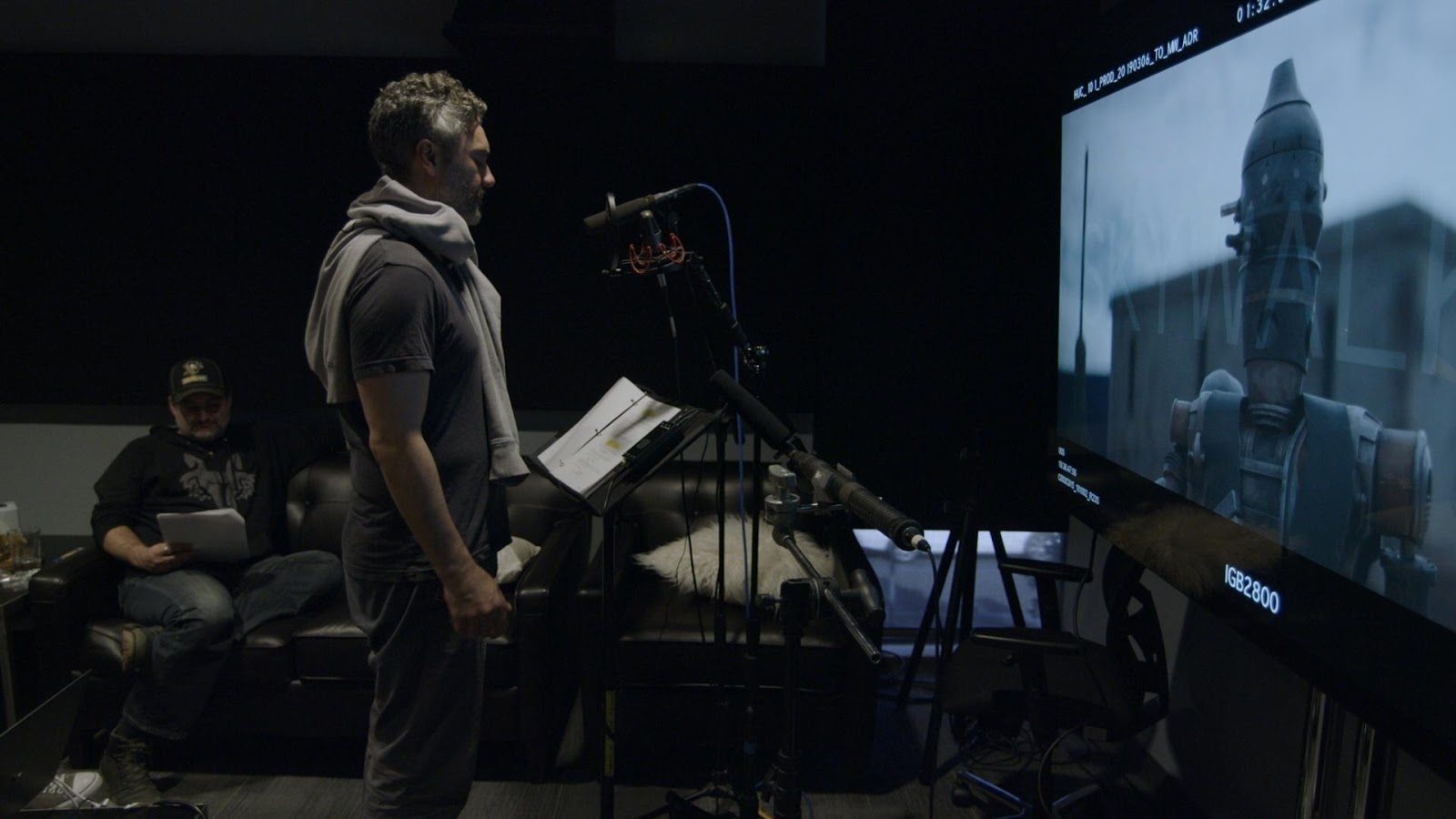Hello and welcome to Laughing Place’s weekly recap of the behind-the-scenes docuseries Disney Gallery: The Mandalorian on Disney+. This week’s new episode, entitled “Practical,” covers the many on-set physical puppets, props, and environments used in creating the first-ever Star Wars live-action television series The Mandalorian. In the list below I’ve broken down the most fascinating tidbits we learned during this fascinating (as usual) half-hour installment.
- Director Rick Famuyiwa says what makes Star Wars Star Wars is the combination of technology and real, relatable human emotion.
- Actor and director Taika Waititi says it was a smart move to continue the Star Wars tradition of having the world look lived-in and with a history behind it.
- Director Bryce Dallas Howard says a lot of what the production crew shot ended up being practical in-camera effects, as opposed to actors in motion-capture suits against a green screen.
- The Mandalorian creator and showrunner Jon Favreau says a big part of the inspiration behind the show was the idea of playing with Star Wars action figures and utilizing characters who were previously only part of the franchise’s background scenery.
- Kuiil the Ugnaught was brought to life by a performance artist named Misty Rosas in a costume with an animatronic head. His dialogue was pre-recorded by actor Nick Nolte. Two puppeteers controlled the character’s mouth and eyebrows.
- Director Deborah Chow says it was challenging to work with the combination of live-action actors and puppets.
- The Child AKA Baby Yoda was simply called “Baby” on set.
- Legendary filmmaker Werner Herzog (who played “The Client” in The Mandalorian) became so entranced with The Child puppet he occasionally forgot it wasn’t real and addressed it directly. He also called the crew “cowards” when they intended to shoot plate shots without the puppet.
- Most shots of The Child utilize the puppet, but even when it was CGI Favreau insisted the effects artists not have the character do anything the puppet couldn’t do.
- Favreau created The Child in the script by calling it a baby of Yoda’s species, and its look was developed by executive producer Dave Filoni, design supervisor Doug Chiang, and concept artist Christian Alzmann. Favreau had previously experimented with this type of character in his VR game Gnomes & Goblins.
- The Child puppet was built and controlled by a company called Legacy Effects.
- The directors would direct The Child as though it was just another performer on the set, and the puppeteers would work together to make those directions a reality.
- The cast and crew members all appreciated how convincing The Child was and would treat it like a real baby.
- Bounty hunter droid IG-11 was not created using an actor doing motion capture. Instead, a practical puppet was used on-set and replaced with CGI in some shots. The puppet’s awkward movements were incorporated into the character’s personality.
- One shot of the Blurrg creatures (when the Mandalorian is looking through his macro-binoculars) was created using stop-motion animation.
- The stop-motion Blurrg puppet and the Kowakian Monkey-Lizard puppet were both created by Tony McVey, who sculpted the original Salacious Crumb puppet in Return of the Jedi.
- Favreau and Lucasfilm president remember the audience reaction to seeing the Kowakian Monkey-Lizard roasting on a spit at Star Wars Celebration 2019 in Chicago.
- Originally the monkey-lizard in the cage was intended to be laughing at the one being cooked, but the noise was changed to “sad sounds” because it came off as “too mean.” Favreau says these specific Monkey-Lizards are probably not Salacious Crumb.
- Favreau compares working in the world George Lucas created to moving into a Frank Lloyd Wright house. “You can’t just move the walls around. You want to keep it still being the essence of what was created by that visionary.”
- He considers the “big movies” the main attraction of Star Wars, while the ancillary projects in the worlds of publishing and television get to have fun and play around in that universe.
- The Mandalorian’s production design crew endeavored to maintain the “low-tech,” gritty feel of the original Star Wars film.
- Property Master Josh Roth helped the show’s weapons feel like they fit in the right timeline by renting surplus World War II weapons just as Lucasfilm did for the Original Trilogy.
- Jon Favreau and his creative team refers to themselves as “The AV Club,” because of how they experimented with combining different technologies to create the show.
- A miniature model version of the Razor Crest ship was created for reference, but was ultimately used in numerous shots for the series.
- Animation Director Hal Hickel had compiled a reel of Star Wars ship movement from the Original Trilogy to use as reference for new Star Wars projects even before The Mandalorian went into development.
- Favreau and Hickel have a lengthy discussion about miniature photography and motion control, and how to go about creating limitations for the process to make the outcome look more realistic.
- Moving the starfield behind the spaceships is a key element to give the illusion of speed.
- Dave Filoni talks about the legacy of Star Wars at Lucasfilm and how advantageous it is to be able to go back and utilize older processes and behind-the-scenes veterans of the series to bring new stories to life.
The first five episodes of Disney Gallery: The Mandalorian are now available to stream exclusively on Disney+.
Sign up for Disney+ or the Disney Streaming Bundle (Disney+, ESPN+, and ad-supported Hulu) now

